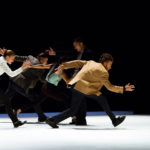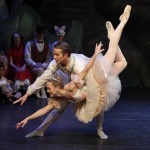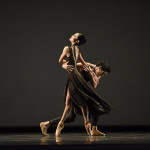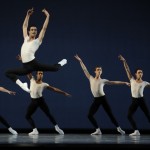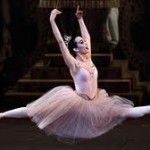It’s the centennial of the birth of Jerome Robbins and ballet companies around the world are dipping into his eclectic body of work to celebrate. Last week’s quadruple bill at San Francisco Ballet, curated by artistic director Helgi Tomasson, gave us satisfying glimpses of Robbins’ prodigious theatrical and musical gifts.
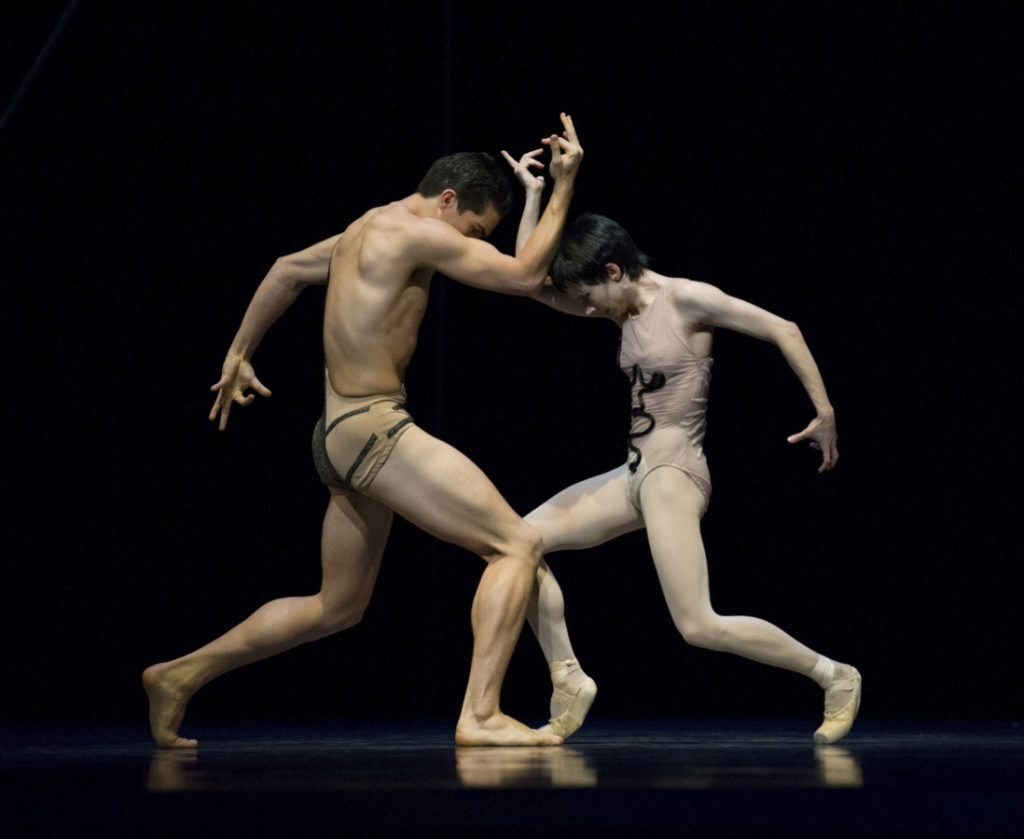
Maria Kochetkova and Steven Morse in Robbins’ THE CAGE (Photo: Erik Tomasson)
Robbins paved the way for Icelandic-born Tomasson to come to New York as a young ballet student. Now at the helm of America’s oldest ballet company, Tomasson pays moving tribute to a mentor whose classical and jazz instincts fused in a number of unforgettable ballets and Broadway musicals (among the latter, On The Town, Fiddler on the Roof, West Side Story.)
It’s no small irony that the San Francisco Ballet board kicked out Michael Smuin for corrupting the classical art form with jazz and pop, and appointed Tomasson to restore (neo)classical decorum. But three decades have passed since that fracas, during which Tomasson has adroitly navigated the rocky passages between diehards and the avant-garde.
Having appeased the traditionalists early in the season with the lavish Sleeping Beauty and Frankenstein, SFB will shortly venture into the unknown, unveiling 12 new works in two short weeks in April, of which much is expected. In between, SFB’s all-Robbins program offered a temporary ceasefire in the battle for the future of ballet, for affection for Robbins runs high in most quarters.
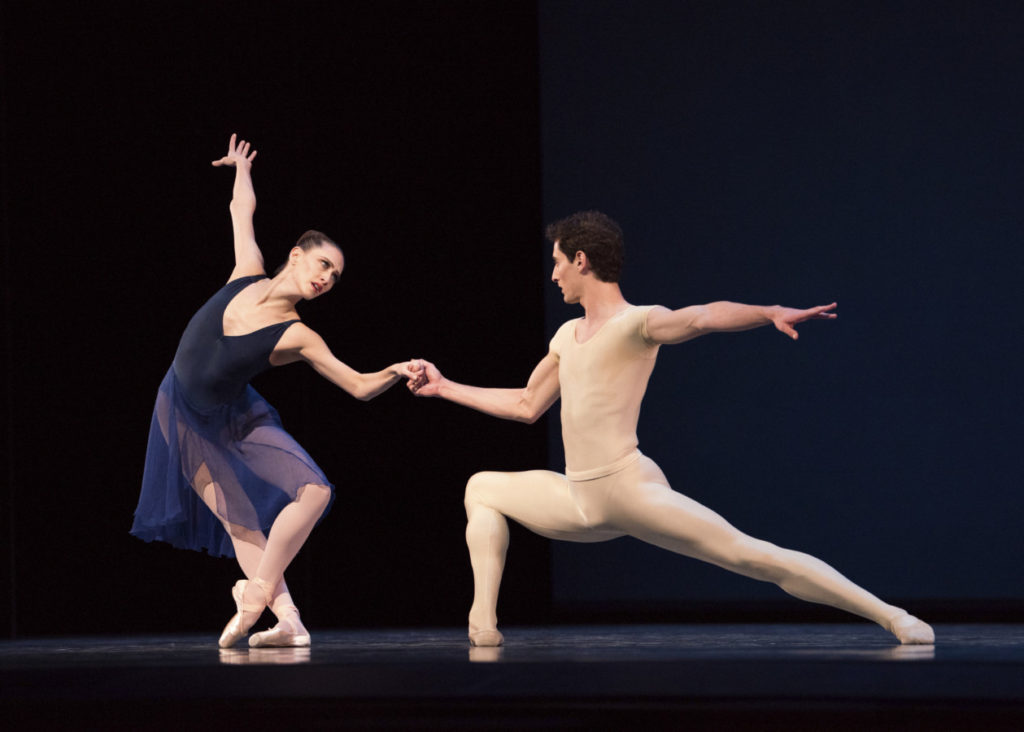
Sarah Van Patten and Carlo Di Lanno in Robbins’ OPUS 19 / THE DREAMER (Photo: Erik Tomasson)
The Mar. 25th performance yielded irresistible gems – not least from the smoking chemistry between Angelo Greco and Ana Sophia Scheller, the latter recently decamped from New York City Ballet. The pair made much of the nebulous Opus 19: The Dreamer. The restless, soul-searching Greco, in a role created for Mikhail Baryshnikov, reeled off explosive jumps and wended his way through the shadowy thickets of the ensemble. His impulsive, romantic nature was well matched by Scheller’s glamour and daring. Whether she is a love interest, a feminine alter ego, or an elusive artistic ideal is never resolved in the choreography, but it was a relief to be spared the clichéd contemporary pas de deux steeped in sexual angst. From the third movement of the busy Prokofiev score, violinist Boxianzi Ling wrung some pathos, reflected in the increasingly tangled partnering.
The Cage was spectacular, easily the most successful offering in the program – which is surprising, given that its 1951 portrayal of women as a swarm of arthropods who kill their males after mating is no longer considered shocking or unusual, more like a staple of the National Geographic channel. Yet everyone onstage attacked this classic of ritual murder with such commitment that it felt like it was created yesterday. Wanting Zhao, always a searing presence onstage, first emerged as the fragile, spindly Novice, exploring what her newly hatched body could do, before morphing into the tribal assassin. Ludmila Bizalion was suitably fearsome as the Queen, Sean Orza stalwart as the victim who courted Zhao but failed to deter her from her mission. The orchestra under Ming Luke gave an uncharacteristically subdued reading of Stravinsky’s Concerto in D. (Jarringly, the bows were taken in a classic Rockettes pose, which somewhat undermined the female power vibe of the whole enterprise.)

San Francisco Ballet in Robbins’ THE CAGE (Photo: Erik Tomasson)
Other Dances, with spirited pianist Natal’ya Feygina making a trio onstage with Sasha De Sola and newly minted principal dancer Wei Wang, is a timeless confection of Chopin, neoclassical ballet, and Slavic folk dance. In the role originated by Baryshnikov, the usually bulletproof Wang gave a somewhat labored performance: he started out buoyantly but put on the brakes after a couple of shaky landings from cabriole. Nothing could unnerve De Sola, however, who was radiant in the Natalia Makarova role without trying to imitate Makarova – spunky, grand, and crystal clear in her bold sweeping movements and luxurious back bends.

Frances Chung and Angelo Greco in Robbins’ OTHER DANCES (Photo: Erik Tomasson)
Program closer Fancy Free proved the most dated of the pieces in the program. A hit in 1944, it inspired the more durable Broadway musical On the Town, which expanded on the shore leave shenanigans of three sailors – rooted, as I wrote of a stellar 2015 Broadway revival, in “a profound sense of loss, insecurity and impermanence.” In the musical, the men remain stock two-dimensional characters but the female characters are rendered with a refreshingly “frank, freewheeling sexuality.”
For SFB, James Sofranko, Ulrik Birkkjaer and John-Paul Simoens gave a vivid account of the cocky sailor trio, putting the moves on Dores André and Madison Keesler. Teasing, mansplaining, and boasting about shooting down enemy planes, they work gamely to win the women’s affections. But the competition predictably degenerates into a brawl, in which the women are manhandled but manage to escape. Appealing performances all around were not enough to distract from the antediluvian narrative. The strongest impression was made by the stunning scenic and lighting design by Oliver Smith and Jennifer Tipton, respectively, and the timeless Leonard Bernstein score.
Here’s hoping the company will continue to plunder the Robbins trove for his most profound work – like Dances at a Gathering, which SFB has conquered in seasons past – and his brilliant comedic inventions, like The Concert.

